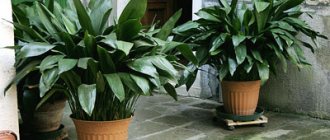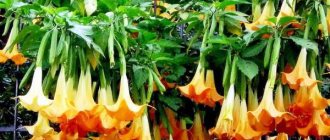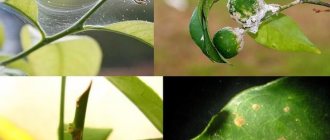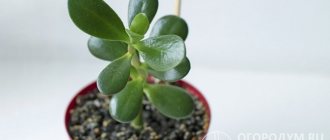Author: Elena N. https://floristics.info/ru/index.php?option=com_contact&view=contact&id=19 Category: Houseplants Published: January 09, 2019Last edits: January 11, 2021
- Cuttings
- Stephanotis turns yellow
- Can I keep it at home?
There are not many beautifully flowering vines in cultivation. One such plant is stephanotis, which is called Madagascar jasmine due to the origin and aroma of its flowers. Stephanotis blooms profusely and is very beautiful at this time. The small dark emerald leaves of the plant are also decorative. However, the juice of stephanotis is caustic and causes skin irritation, so you need to wear gloves when working with the plant. Stephanotis should be kept out of the reach of children and animals.
- What conditions does stephanotis need to bloom?
- How to care for a vine?
- How to propagate it?
- How to get rid of stephanotis problems?
You will find answers to all these questions in our article.
Description
Stephanotis belongs to the Lastovnevye family. Today, there are only 15 species of this plant, and only one of them has been successfully cultivated and is suitable for indoor growing. This beautifully flowering perennial vine is found on the island of Madagascar and in China. In the wild, the plant can grow up to 6 m, increasing its length by 60 cm annually.
Stephanotis leaves are 5-10 cm long, oval-shaped, leathery, dark green in color, slightly bent along the central vein, arranged oppositely.
The main decorative value of Madagascar jasmine lies in its flowers. The flowers are funnel-shaped, with a long floral tube and five petals, slightly pointed at the ends. The color of the buds can be snow-white, cream, yellowish or light purple. Star flowers are collected in umbrella inflorescences of 10 pieces. They are very fragrant, especially in the evening. In nature, Stefanotis flowering lasts about 10 months; at home, the plant also blooms for a long time, especially if you provide it with comfortable conditions.
Possible growing problems
The most common diseases encountered are powdery mildew and root rot. Both are usually the result of over-hydration when kept cold. Fungal infections, if the percentage of damage has not reached critical values, the disease is treated with fungicides, which requires a complete revision of the root system with the removal of affected areas and correction of growing conditions.
Other possible problems:
- The leaves are turning yellow. Stephanotis turns yellow due to lack of lighting or insufficient humidity. Watering with too cold and hard water can also provoke a problem.
- The buds are falling. There may be several reasons - a draft, insufficient watering, or rearranging the pot relative to the light source. During budding, it should stand in one place and the same side to the light source.
- There is no flowering. A very common situation associated with insufficiently comfortable living conditions. It is necessary to review all plant care in accordance with the recommendations.
- Flowers wither prematurely. Most likely, they lack moisture and light. With proper agricultural technology, flowering should last for several months.
Types with photos and names
Stephanotis is not yet very common in indoor culture, and of all the varieties, only one is suitable for home breeding.
Stephanotis floribunda
This variety is popularly called the waxed flower. An ampelous, year-round green plant in nature grows more than 5 m. The leaf blades are large, dense, shiny, painted in a rich green color. At the beginning of summer, fragrant cream or white buds appear. The flowers have a tubular shape, and they are collected in loose umbrella inflorescences of 7-10 pieces.
Stephanotis floribunda variegate
This varietal variety differs from the species plant in the color of its leaves. In Stephanotis variegated, the tips of the leaves are slightly smoothed, and the plate itself is decorated with light green, yellowish and white spots and stripes, which contrast with the main dark green color of the foliage.
Types in the table
The most popular types for indoor growing:
| Name | Peculiarities |
| Floribunda (profusely blooming). | White flowers, up to 6 cm in diameter, resemble stars in shape. |
| Variegata or variegated. | It differs in the color of the leaves - it has stripes and white, yellow or green spots. The leaves are slightly rounded. |
| Akuminata. | It has cream-colored flowers. |
| Grandiflora. | It has a larger inflorescence of 30 flowers than other species. |
| Thorsia. | It has a larger inflorescence of 30 flowers, pinkish in color, than other species. |
How to care for Madagascar jasmine at home
Stephanotis is believed to be difficult to care for. Indeed, the tropical liana is quite capricious and needs special care, but if you provide it with conditions close to natural, then Madagascar jasmine will certainly delight you with its rapid growth and long-lasting fragrant flowering.
Priming
Soil for Stephanotis can be purchased at a flower shop. A loose, light substrate with weak or neutral acidity (about 5.5-6.5 pH) is suitable. It is important that the soil allows water and air to pass through well, so add a little perlite and sand to it.
You can make your own soil mixture from equal parts of deciduous, turf and humus soil. A little moss, brick chips, perlite and sand are mixed into the finished soil mixture.
Lighting
Like most tropical inhabitants, Stephanotis requires bright but diffuse lighting. In the house it is placed on the south side of the house; windows oriented to the east or west are also suitable. On a north window or in winter, the flower will need additional illumination with phytolamps.
The plant responds to a lack of light with slow growth and lack of flowering, but on a south-facing window it will need shading from direct sunlight.
Watering
In the warm season, spring and summer, Stephanotis is watered with plenty of soft water at room temperature. It is important that the top layer of soil has time to dry out between waterings, but at the same time the substrate should not be allowed to dry out.
In winter, the plant goes into hibernation, so watering is reduced to once every 10 days. Jasmine reacts to an excess of moisture by rotting the roots, and to a lack of moisture - by drying out the leaves and the appearance of pests.
It is advisable to sometimes acidify the water for irrigation, otherwise the plant stops growing, becomes lethargic and loses its decorative effect. To do this, add a little citric acid or lemon juice to the water for irrigation once a month.
Temperature
Stephanotis does not tolerate temperature changes or drafts. The plant generally does not adapt well to new conditions, so it needs to be given a little time to acclimatize. In summer they are kept at a temperature of about 16-25 degrees. It is advisable to avoid overheating.
In winter, the plant is kept at a temperature of about 14-16 degrees. At this time, it is extremely important to monitor the humidity levels in the room, since operating batteries can greatly dry out the air. It is in winter that flower buds are laid, so a comfortable wintering with a short rest period is very important for Stephanotis, otherwise, next season you may not see it bloom.
Humidity
In nature, Madagascar jasmine grows in the humid tropics, so indoors all conditions are created for it to feel at home. A humidity of around 60-70% is suitable for it. The desired atmosphere can be created by vessels with water placed near the flower, a household humidifier, spraying, or moisture-loving neighbors. A flower pot can be placed on a tray with wet expanded clay or pebbles.
In spring and summer, the plant is irrigated with warm water from a fine spray. Spraying is carried out in the morning or evening and at the same time make sure that moisture does not get on the buds and flowers. In winter, if the air in the room is too dry, you can also spray the crown of the plant or the space around it.
Fertilizer and feeding
In early March, after the end of the dormant period, Stephanotis is fed with universal liquid fertilizers for indoor ornamental flowering crops. It is important to pay attention to the composition of the fertilizer, since in the spring the vine needs more nitrogen, and after the buds appear, phosphorus and potassium. Fertilizer is applied 3-4 times a month, diluting the recommended concentration by 2 times.
In October, they stop feeding, as at this time the plant is preparing for hibernation.
Transfer
Stephanotis grows quickly and requires regular frequent replanting. It is usually carried out in spring or autumn. It is strictly forbidden to replant a flowering vine. When working with the plant, it is recommended to wear gloves, as its juice can cause severe irritation if it comes into contact with the skin and mucous membranes.
Young plants need to be replanted 2 times a year, and older plants, older than 2 years, can be replanted once a year. Old Stephanotis do not need to be replanted at all, but periodically update the top layer of soil in the pot. The pot for the vine must be heavy and stable, since the flower can grow greatly, and if you install a support for it, the light plastic pot will easily tip over. A thick layer of drainage made from clay shards, pebbles, tracing paper, expanded clay and brick must be laid on the bottom of the dish.
In order not to tear off the thin and small roots, jasmine is replanted by transshipment. After transplantation, the plant is watered carefully, in small portions with the addition of root formation stimulants, but you can spray the flower more often. Thanks to this, it will recover faster and take root in the new pot.
Bloom
Stephanotis blooms mainly in summer, and its flower buds are laid in winter. A cool winter and a relative period of rest for the plant are very important, otherwise the gardener will not be able to wait for fragrant flowers. During the formation of buds, in no case should you turn or rearrange the pot so that the flowers do not fall off without opening. In nature, fruits form in place of wilted flowers, but at home this usually does not happen.
Framing and trimming
In early spring, side shoots of Stephanotis are pruned. They are shortened by no more than 1/3, otherwise the plant will be sick for a long time. This will help not only maintain the decorative appearance of the vine, but also rejuvenate it and give it the desired shape. During pruning, only the side shoots are shortened, and the main stem is not disturbed.
For the full development of this beautifully flowering vine, good support is important. In nature, the shoots of the plant tend upward, entwining the trunks, branches of trees and shrubs, and if there is no support, then the shoots of jasmine hang down lifelessly, the plant loses its decorative effect and soon dies.
The support must be high. It is better to choose three-dimensional structures or curved metal frames. They are placed in a pot and entwined with vine shoots, resulting in picturesque compositions, especially during the flowering period.
Rest period
Stephanotis hibernates from mid-November to mid-February. At this time, flowering and growth stop, so the plant is moved to a cool place and kept at +14-+16 degrees. Air humidity and watering at this time should be moderate.
At the end of the dormant period, the pot with the vine is moved to a warm room, watering is gradually increased and fertilizers begin to be applied. The plant should be accustomed to brighter light and warmth gradually.
Stephanotis flower: how to find new arrows
This plant is distinguished by the fact that its umbrella-shaped inflorescences grow directly from the axils of the leaves without an arrow. And such inflorescences, as a rule, grow in quantities of 8-11 pieces.
No flowering
Neomarica walking iris: home care and examples of popular varieties
The main value of stephanotis as an ornamental plant is the snow-white flowers that decorate the vine. But it happens that there is no flowering, and this upsets the grower. The main reasons why stephanotis does not bloom:
- depleted soil in the pot due to non-compliance with the rules for fertilizing;
- excessive amounts of nitrogen in fertilizers;
- during the wintering period of the plant, the room temperature was below 16 °C;
- the plant experiences a lack of lighting.
How to make stephanotis bloom
At home, flowering occurs in early summer and lasts about four months. Flowers appear only on adult plants that are 3-4 years old. Annual and abundant flowering is facilitated by following basic care rules:
- timely plant transplantation;
- sequence of fertilizing;
- protecting the flower from temperature fluctuations and drafts;
- ensuring proper wintering with maintaining the air temperature no more than 16 °C;
- ensuring sufficient lighting. If there is a shortage of it, use additional light sources.
Stephanotis is easy to grow at home.
Note! This flower will delight you with beautiful green leaves and snow-white flowers with a wonderful aroma, you just need to surround it with attention and care, as well as provide proper care.
Reproduction of Stefanotis
At home, Stephanotis can be propagated by seeds and cuttings. It is believed that the plant does not reproduce well at home; the process is quite complicated and takes a lot of time. But if you have patience and some knowledge, you can grow a vine yourself at home.
Cuttings
Cuttings are the easiest and fastest way to obtain a new plant and at the same time preserve varietal characteristics. Cuttings are rooted in early spring. The upper parts of branches with 3-4 leaves are suitable for this. Before placing the cuttings in a damp sand-peat mixture, they are kept in a solution of Kornevin or another root growth stimulator, and then embedded in the prepared soil to a depth of 2 cm. After planting, the seedlings are covered with film or a transparent plastic cup and several small holes are made in the shelter .
If everything is done correctly, then in a month the roots will appear, and after a few more days the plant can be transplanted into a flower pot filled with substrate. At first, the seedlings are shaded from the bright sun until they actively begin to grow.
Seeds
It is almost impossible to obtain Madagascar jasmine seeds at home, so they are purchased at a flower shop.
Liana seeds are sown in early spring in a moist peat-sand substrate, to a depth of about 1 cm. The surface of the soil is irrigated with a sprayer, the seeds are sprinkled with soil, covered with glass or film and kept at a temperature of +21 degrees. Shoots begin to appear after about 2 weeks. After most of the seeds have sprouted, the cover can be removed. Seedlings are transplanted after the appearance of 2 true leaves.
Transfer
Since stephanotis is a large flower and not very mobile due to its attachment to a support, replanting can cause certain difficulties. The good news is that it does not need frequent replanting and can grow for a long time in a cramped pot, disproportionate in size to the crown. Moreover, not critical crowding stimulates flowering. However, a newly purchased specimen must be replanted without fail, since most often the plant is sold in a temporary transit substrate.
Due to the dense root system, replanting is carried out using the transshipment method, filling the resulting voids with new soil. With normal development of shoots, their annual growth is about one and a half meters.
It is not recommended to buy specimens with vines longer than 1.5-2 m.
Substrate
The soil can be made from garden soil with the addition of the same amount of compost, high peat and coarse sand. Other possible components: leaf and turf soil or leaf humus.
Of the ready-made compositions, universal substrates are suitable for indoor flowering crops, but a self-made soil for this plant is preferable; it should be quite dense and heavy.
It is worth paying attention to the drainage hole in the pot; it is better if there is more than one and not small. Drainage is placed at a height of about 20% of the entire pot.
It would be very prudent to immediately take care of the support and its reliable fastening, taking into account growth.
If you add a small amount of root formation biostimulator to the water during the first watering after transplantation, the adaptation process will be easier and faster.
Possible difficulties
Errors in care can be recognized by the following signs:
- Yellowing and dropping leaves - the plant requires additional feeding or brighter lighting.
- Falling leaves - draft or sudden cold snap.
- Lack of flowering, stoppage of bud development - the pot was rearranged, turned or moved; a change in the temperature of the contents may also be the reason.
- Pale spots appear on the leaves - lack of sun.
- Yellow-brown stains on the leaf plates are too bright light.
- Curling buds means low watering.
The absence of flowering may indicate that:
- The rest period was poorly organized or not observed at all.
- When replanting, the pot chosen was too spacious.
The plant may also respond by dropping buds when the pot is moved or replanted during flowering. If few flowers appear and the flowering period does not last long, then perhaps the vine does not have enough sun or nutrition.
Pests and diseases
The enemies of stephanotis are aphids, scale insects, spider mites, and mealybugs. To combat the first two, treatment with the biological preparation Akarin is used; in case of severe infection, spraying with Actellik or Fitoverm is used.
Ticks are destroyed by the drug Kleschevit. The mealybug dies after spraying the plant two or three times with a two percent Phosfamide emulsion.
Sometimes stephanotis is affected by powdery mildew, which is treated with a solution of the drug Hom at the rate of 4 ml per liter of water.
In the photo: Flowering vine stephanotis
Stephanotis turns yellow
Before deciding what to do if stephanotis turns yellow, you should find out the cause of this phenomenon. If stephanotis leaves turn yellow, then the main reason is always the same - your oversight or violation of the rules of care, namely: watering the plant with water containing lime, or allowing the light-loving stephanotis to vegetate in a poorly lit place. Sometimes Staphanotis reacts to replanting in this way or signals to you that you haven’t fertilized it for a long time. Correct your mistakes and, in order not to make them again or to avoid making any others, change
Is it possible to keep Stefanotis at home?
Stephanotis flowers have a pleasant, intense aroma, but not everyone can tolerate it. The aroma is especially intensified in the evening and at night, so you should not place the vine in the bedroom or small rooms. The plant is ideal for landscaping spacious rooms.
Madagascar jasmine juice is poisonous, so when working with it it is recommended to wear gloves and then wash your hands thoroughly with plenty of water. It should not be placed in a children's room or any place accessible to children.
Stephanotis - jasmine vine from Madagascar
Stephanotis is a beautiful climbing plant from the Lastovnia family. It has not yet received widespread use. Flower growers are just taking a closer look at this exotic plant. It can be used as an indoor flower and for making bouquets. Stephanotis lives in East Asia (Japan, China), the Malay Archipelago and Madagascar. For its delicate flowers it is often called “Madagascar jasmine”. Taking care of him is not so easy. To achieve abundant flowering, you must follow a number of rules.
Signs and superstitions
There are several rather contradictory signs associated with Stefanotis. For example, if this flower grows in the house where an unmarried girl lives, it is believed that she will never get married. At the same time, Madagascar jasmine flowers in some countries are an important attribute of the bride’s outfit; they decorate girls’ hair and bouquets.
In the home, Stefanotis creates a favorable atmosphere, filling the rooms with his aroma, and helps relieve tension. It improves the home environment, brings peace and harmony, evokes positive emotions, and if you give Stefanotis to a closed person, he can become more sociable and open.
Planting and maintenance
Rose Lydia Lovely - what kind of flower is this from the floribunda family?
To plant stephanotis, you need to choose a large container for the vine and fill it with humus, leaf soil and compost. The organic content provides essential microelements and also helps acidify the soil to a pH of 5.5 to 6.5. Grapevine plants appreciate loose, moderately moist soil, so it is worth covering the bottom of the pot with chopped bark or other natural mulch. It is necessary to provide the vine with a suitable trellis or braid to support the twisted tendrils. Without it, the vine becomes a tangled mess.
This is how a stephanotis bud opens
Photo
Despite his capriciousness and demanding nature, Stephanotis takes root well at home. By following simple rules of care and providing it with comfortable, close to natural conditions, you can annually enjoy the incredibly beautiful, abundant and fragrant flowering of this plant.
Trimmings and pinching
Among other things, you will need to prune the plant annually. Ideally, do this in mid-spring. The fact is that flowers will appear only on young shoots of Stefanotis. In addition, you can also perform pinching to form some regular crown shape. In addition, this will contribute to its better flowering.
Note to the florist
Why doesn't stephanotis bloom?
If buds do not form or open on your bush, this indicates that immediately before flowering you disturbed the plant - moved it to a new place or sharply changed the temperature regime.
Why do the leaves on stephanotis turn yellow?
There may be several reasons:
- Lack of light;
- Nutrient-poor soil mixture;
- Drafts;
- Cold air;
- Damage to the root system (perhaps there is not enough space for the roots and the flower needs to be transplanted into a larger container).
Watering requirements
In order to bloom and grow well, the indoor stephanotis flower requires some care regarding watering and fertilizer.
- Water regularly, but not too much, to avoid waterlogging of the roots. Watering once a week should be sufficient.
- Adding liquid floral plant fertilizer every two weeks will improve flowering and growth.
- Stephanotis requires a lot of moisture because its natural habitat is forest.
- It is worth frequently spraying soft water on the leaves from a spray bottle.
- During the winter months, this plant requires less water as moisture causes dew to collect on the leaves. Fertilizers do not need to be applied during this period.
Stephanotis care video
Stephanotis is an unpretentious plant, but very delicate.
The only thing you should remember when choosing a flower for your home collection is that it does not like drafts and sudden temperature changes. In winter, it is better to choose conditions for it that are close to those of a greenhouse, and in summer, shade it from the sun’s rays and spray it regularly. If you place the plant in the loggia, you will soon feel an amazing floral aroma. You can also share your secrets for caring for stephanotis. If you have questions, ask them in the comments below, we will be happy to answer them.











